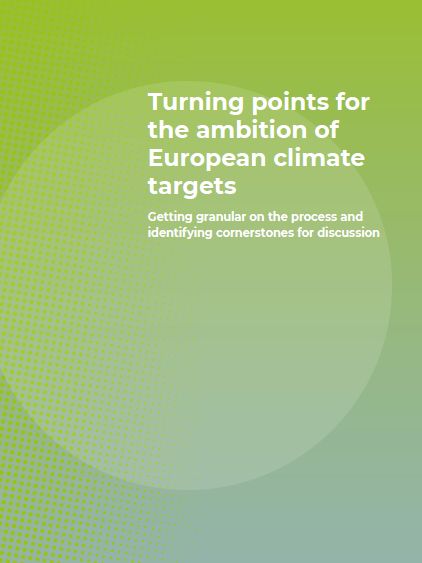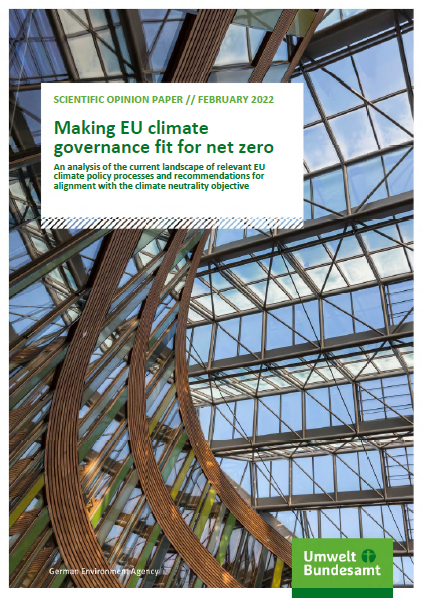Can Current EU Climate Policy Reliably Achieve Climate Neutrality by 2050?
Post-2030 crunch issues for the move to a net zero economy
- Publication
- Citation
Duwe, Matthias et al. 2023: Can current EU climate policy reliably achieve climate neutrality by 2050? Post-2030 crunch issues for the move to a net zero economy. Berlin: Ecologic Institute, Oeko-Institut.
The EU has just updated its climate target for 2030 and most of the policy instruments in place to achieve it. Does this toolbox have all the items needed to achieve the shift to net-zero emissions by 2050? This discussion paper by Oeko-Institut and Ecologic Institute addresses and analyses the main pillars of the EU's climate policy identifies crunch issues on the path towards climate neutrality and offers potential solutions.
The analysis was conducted during negotiations of the "Fit For 55" packages and includes the final compromises on the most relevant laws, which define the EU climate policy architecture post-2030. Following a two-step approach, the authors first provide a description of the post-2030 policy architecture according to "Fit For 55" along its main pillars; second, the authors assess each of the main pillars to better understand how the covered sectors can be changed, so they align with the climate neutrality target.
In conclusion, the report finds that the "Fit For 55" package signifies a step towards a transformative EU climate policy architecture, but is not yet entirely capable of facilitating climate neutrality by 2050. Key issues to be resolved for post-2030 climate policy include the following:
- What climate neutrality mean in terms of quantitative targets is not sufficiently defined beyond 2030. Separate targets for emissions and sinks are needed. An explicit update to the EU LTS would clarify the pathway towards them, to inform policy-making and investments (incl. sectoral roadmaps). Overall, EU climate policy needs shorter, mandatory policy learning cycles to become both more resilient and flexible on the path to net-zero.
- Member States and their climate policy need to become more aligned towards climate neutrality, while the system must employ differentiation and solidarity to accommodate different starting points and economic capacity. This requires a stronger approach to the non-ETS-1 emissions.
- To trigger change in these sectors, additional sector-specific action at EU level is needed in buildings and international transport, beyond carbon pricing. Harmonized EU measures are also needed in agriculture and LULUCF, for both emissions reductions and incentives for carbon dioxide removal, which requires better accounting and a reliable regulatory framework. Efforts to reduce emissions from agriculture are currently insufficient and need to become a priority going forward.
- Market demand and infrastructure are key enablers for the move to net-zero industrial production, which are currently not being supported sufficiently and require additional attention at EU level.
- While the ETS creates a strong decarbonisation push in electricity production, its realization needs a coordinated effort on infrastructure and markets to allow renewables to be deployed at sufficient speed.
Did we spark your interest? You can download the final paper.


